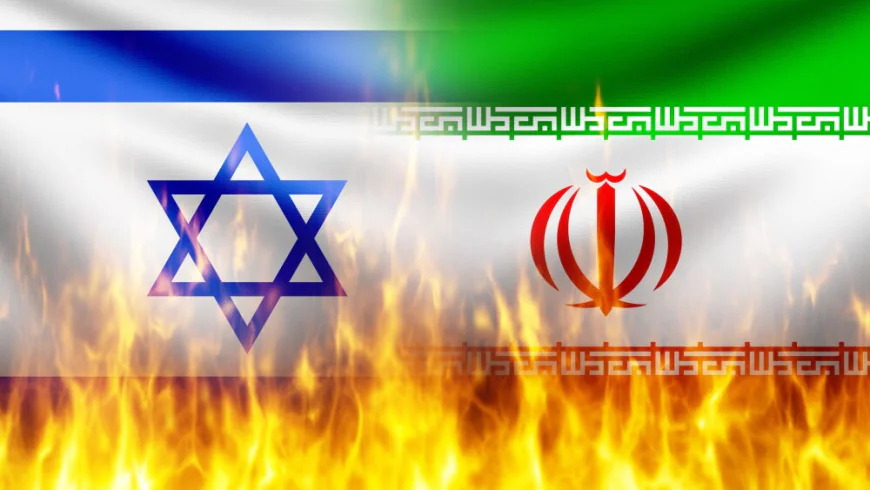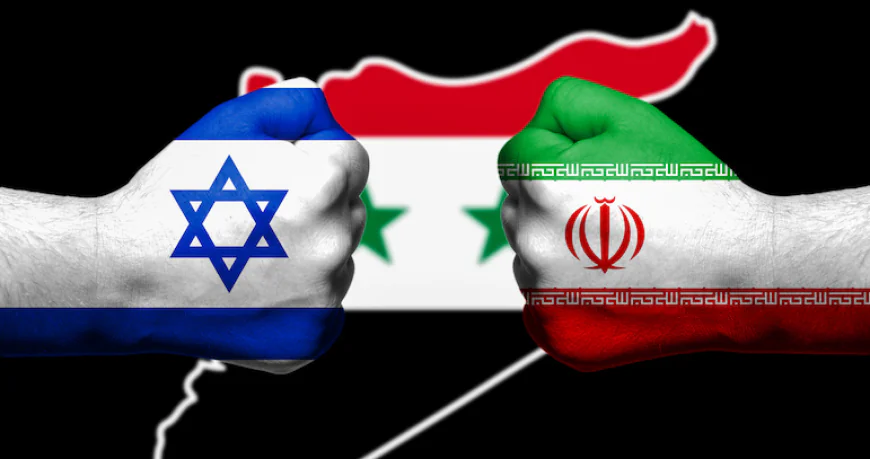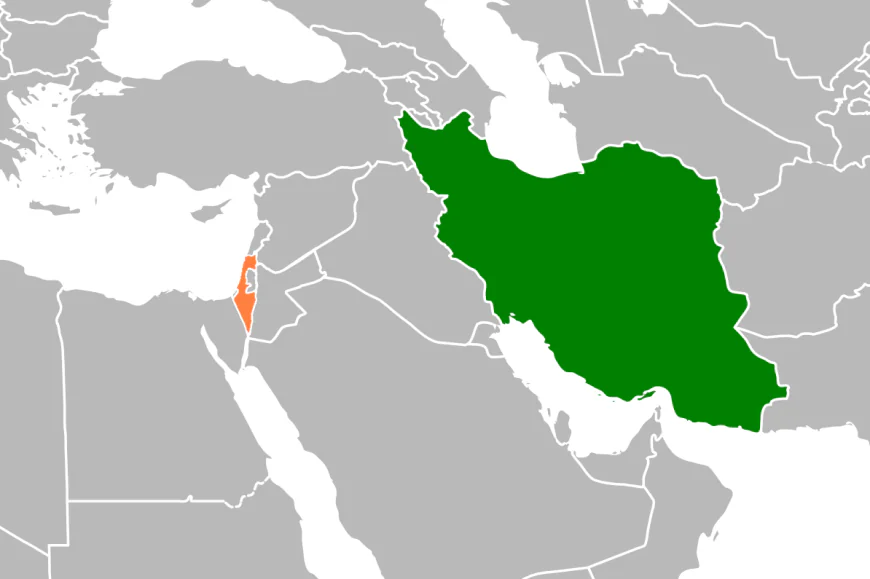Why Israel and Iran Are at War: Understanding the Explosive Conflict in 2025
Israel and Iran were secret partners for a long time, especially under Iran's Shah regime, when the two nations enjoyed mutual interests and had an unspoken relationship. All of this changed dramatically following the 1979 Islamic Revolution.

Israel and Iran were secret partners for a long time, especially under Iran's Shah regime, when the two nations enjoyed mutual interests and had an unspoken relationship. All of this changed dramatically following the 1979 Islamic Revolution. The new Iranian government adopted an anti-Western, anti-Israel position, the beginning of decades-long enmity.
Since that time, the two countries have become embroiled in several stages of indirect warfare—anything from cyberattacks and assassinations to support of the opposite side across the entire region. Iran's alignment with groups like Hezbollah and Hamas has further cemented its opposition to Israel, and Israel has carried out covert activities aimed at interrupting Iranian warlike pursuits.
You might also like: Israel Disappointed as Ghana Abstains from IAEA Vote on Iran’s Nuclear Breach
Nuclear Tensions and Existential Threats
At the heart of Israel's concern is Iran's nuclear ambitions. Israel sees any chance of Iran acquiring nuclear weapons as an existential threat. The 2015 Joint Comprehensive Plan of Action (JCPOA), although originally designed to limit Iran's nuclear program in return for sanctions relief, had the U.S. pull out of it in 2018, and the subsequent slow abrogation of its terms reignited tensions. Israel has for a long time complained about Iran enriching uranium, and tales that Iran is close to deploying a nuclear weapon have amplified Israel's sense of urgency. The fear isn't necessarily of a bomb—it's of altering power dynamics in a turbulent region already.

Much of the Israeli-Iranian war has been fought indirectly in terms of proxy wars and clandestine operations. Iran has supported Hezbollah in Lebanon, financed various Shiite militias in Iraq, and stood in close association with Hamas in Gaza. They have served time and again as Iran's long arm in the battle against Israel, firing missiles, engaging in skirmishes across borders, and conducting violent resistance.
Ghanaian gold smuggling has cost the country $11 billion, according to a report
In retaliation, Israel has undertaken targeted assassinations of Iranian military officials and nuclear technicians, sabotage operations, and bombings of Iranian targets within Syria and other locations. These indirect clashes have left the two nations in a state of ongoing alert and strategic tension.
Catalyst: October 2024—Direct Missile and Drone Escalation
The shadow war persisted as a straight-up conflict in the latter part of 2024 when Iran launched a series of missile and drone attacks upon Israel during the broader Gaza war. This was the first time that Iran openly attacked Israeli territory using its own equipment. Israel struck back by ramping up airstrikes against Iranian infrastructure in Syria and issuing threats to extend the fight even further. These escalations were a volatile trend from proxy war to real military confrontation, endangering the interests of world powers and the international community.
Operation "Rising Lion": June 2025
In June 2025, Israel launched a gigantic military operation, which was labeled as "Operation Rising Lion." Over 200 airstrikes were launched at Iranian nuclear facilities, missile depots, and strategic command centers across the nation. According to Israeli intelligence, Iran had already gained enough enriched uranium to produce multiple nuclear weapons, and Israel was not able to allow Iran to reach the threshold of nuclear breakout. This attack was not a tactical attack—it was a strategic mission to prevent or delay Iran's nuclear breakout. The strike's size and precision showed that Israel was willing to escalate the stakes in order to protect what it believes is its survival.
Iran Fires Back: The "True Promise III" Offensive
Iran fired back within hours with its largest-ever retaliatory strike, firing over 150 ballistic missiles and over 100 armed drones into Israeli skies. Target cities were hit, inducing mass panic and casualties. The Iranian regime labeled this counterstrike "True Promise III," cast as a righteous retort to Israeli aggression. Even though most of the missiles were shot down, some made it through to kill at least 24 Israeli citizens. At least 224 Iranian citizens were killed in the prior Israeli attacks, according to reports from Iranian media, which further fueled nationalism.
Political and Regional Ramifications
The conflict has united political parties in Israel as opposition leaders such as Yair Lapid have rallied behind Prime Minister Benjamin Netanyahu. Calls for national unity overrode political cleavages as Israeli citizens braced for further escalation. In Iran, the military leaders and Supreme Leader are squeezed both to protect the national sovereignty and to avoid a broad conflict that destabilizes the regime. The government in Iran walks a tightrope between militancy and internal stability, with protests and economic hardship continuing to apply pressure to the country. Simultaneously, neighboring countries like Lebanon, Syria, and Iraq are gearing up for potential spillover.

World Implications
The war between Israel and Iran is not just a local issue; it has huge international implications. Oil prices have also increased due to fears of disruption in the Strait of Hormuz, which transports large amounts of the world's oil supply. The United Nations, the European Union, the United States, and China have called for an immediate de-escalation and return to diplomatic negotiations. The fear of a still bigger regional war if Iran's supporters like Hezbollah or the Houthis decide to open new fronts exists. The Western countries are also concerned about the security of their embassies and diplomats in the region.
Why the War Now?
There are several reasons the war has been escalated in 2025. First, Israel felt Iran was on the verge of becoming a nuclear state and acted to remove that capability. Second, Iranian proxies were weakened after previous wars in Gaza and Lebanon, giving Israel an opportunity to attack. Third, there is a domestic political element in both countries. Netanyahu, politically strained and legally hemmed in, perhaps saw the military campaign as a way to unite the nation and assert his leadership credentials. Similarly, Iran's regime, economically beset and facing domestic opposition, perhaps saw confrontation as a possibility to rally nationalist support.
What's Next—Outlook & Solutions
The future is uncertain. Both states have indicated their military capabilities, but neither seems ready for an attrition war. The risk of further broader escalation is present, especially in the event of increased involvement by other powers in the region. Meanwhile, diplomatic efforts remain the best hope for de-escalation. Global leaders are calling for immediate ceasefires and a return to negotiations—maybe renegotiating the nuclear deal on different terms. The test will be to bring together the high level of mistrust between the two countries and establish peace in the region in a Middle East that is again on the verge of anarchy.


